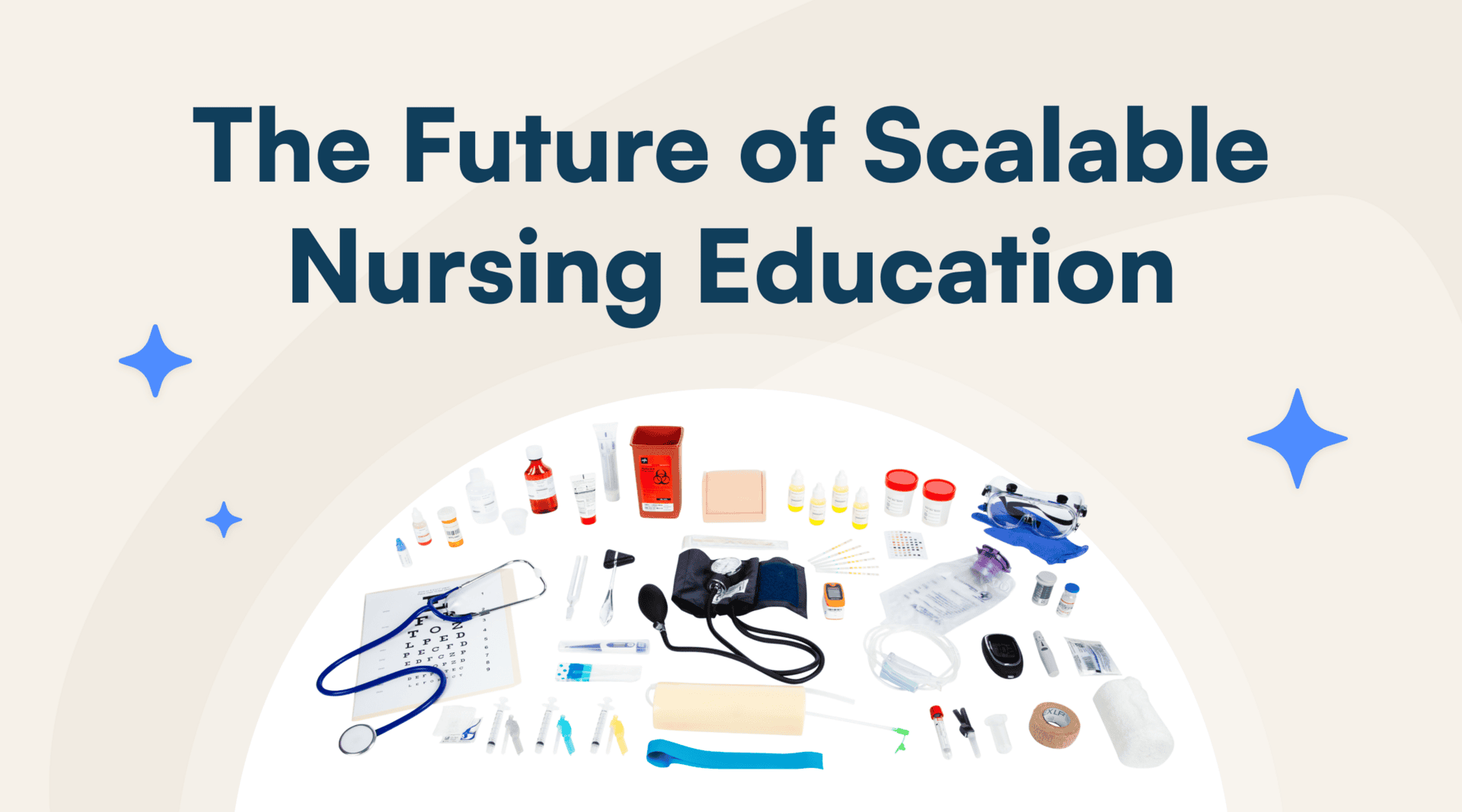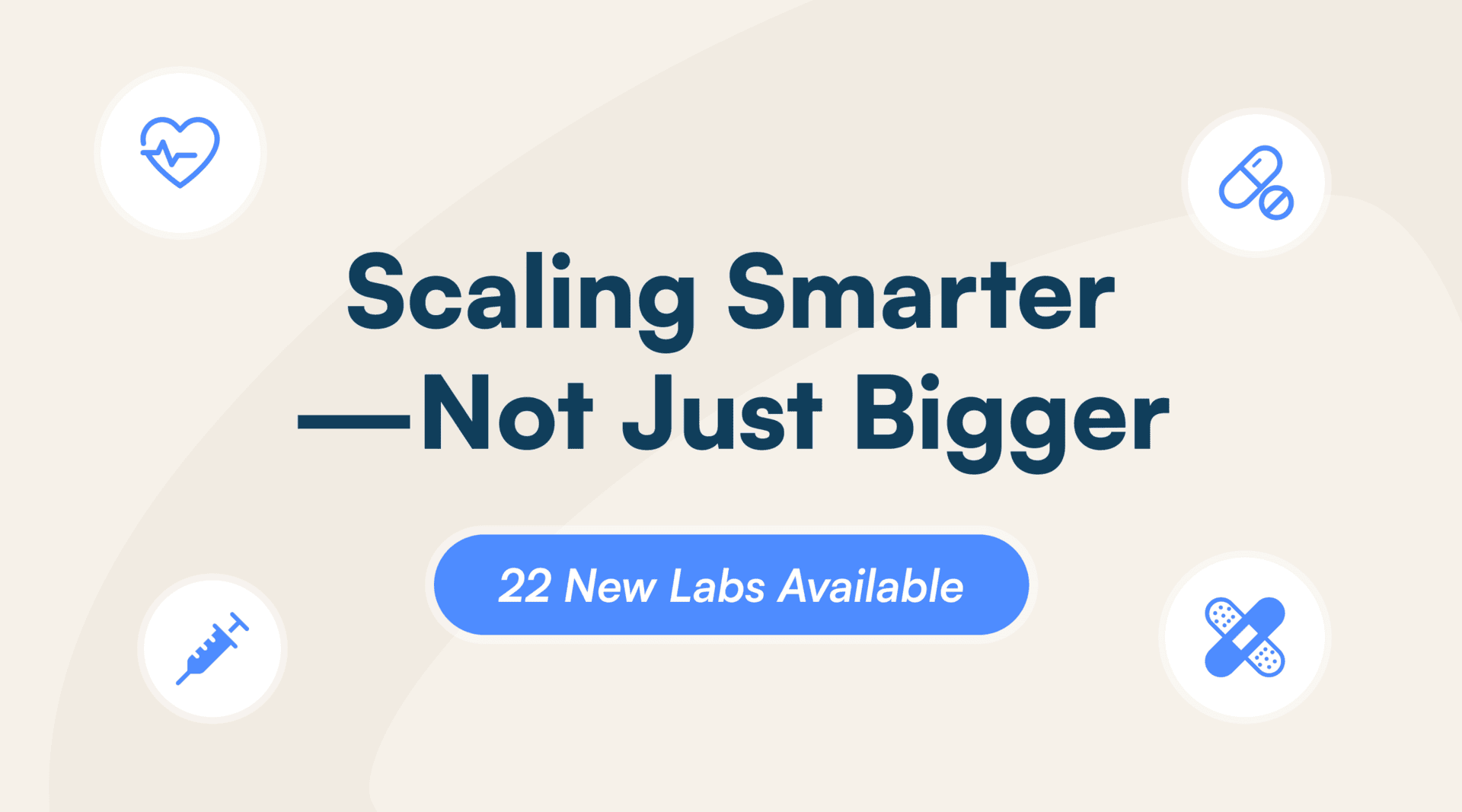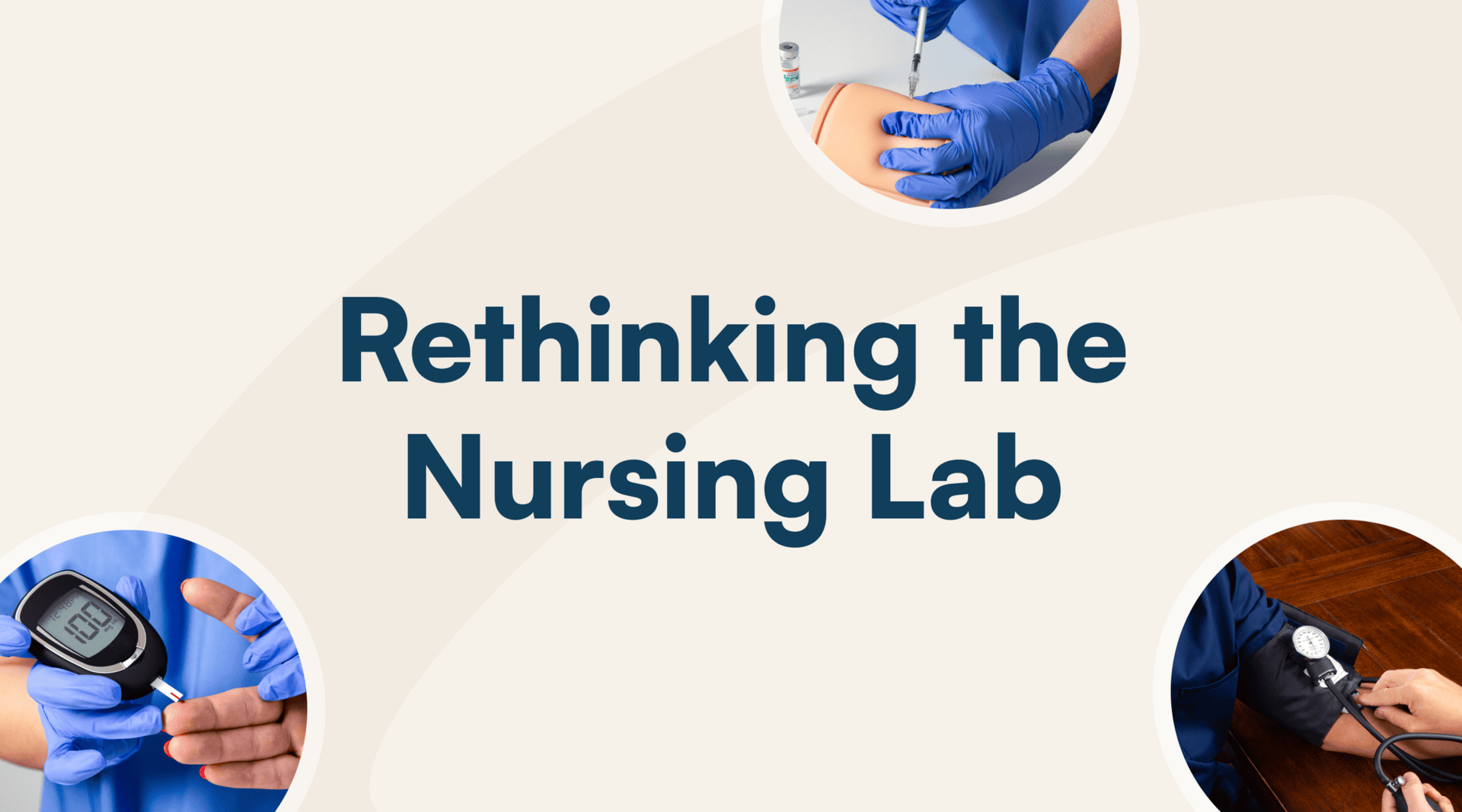Whether your course is online, on campus, or has hybrid or blended components, the goal is always the same: enable student success.
Imagine your students walking into your campus lab, setting up at their lab benches, and knowing just what to do. Imagine those same students taking an online lab and feeling confident enough to walk into a lab next semester and apply what they’ve learned. Sadly, this isn’t the case for most students. Close to 80% of the administrators and instructors we surveyed said that students lack prerequisite knowledge and preparedness for this course, and nearly half of students said they don’t feel confident or prepared either.
But there’s hope…and it lies in the strategic pairing of virtual simulations with hands-on labs for a more effective and meaningful student learning experience.
In fact, using virtual simulations is integral to increasing access to and giving more students an opportunity to experience a lab course. As part of the 2024 Annual Lab Report, for which we surveyed more than 1,875 students, nearly 90% of students said it was important to them to be able to take science labs online—expanding the ways you can offer your courses. From fully online to on-campus, hybrid or blended, the courses that use virtual simulations paired with hands-on labs will help your students more deeply engage with course material and lead to a more holistic learning experience.
Reason 1: Virtual Simulations Reinforce Hands-on Learning.
As you know, science is all about doing, and at this point, there’s no question that lab courses need hands-on components.
In fact, incorporating a hands-on element in any lab experience is critical for student learning and deeper understanding of the course content, especially online. It’s the key to ensuring the experience is comparable to a face-to-face lab. However, virtual simulations can plan a role in the effectiveness of those hands-on experiences.
Both instructors and students agree that using hands-on labs with virtual simulations is essential for creating an engaging lab experience that’s comparable to an on-campus lab. While 77% of students favor a hands-on component in their lab course, 40% opt for a mix of hands-on and virtual simulations. Why?
As one full-time biology student shared, “Virtual simulations help me learn due to less fear of critical errors, and I can repeat experiments until I get it, which helps me learn better.” In fact, most students echo these sentiments. 84% of surveyed students said that virtual simulations are a helpful resource for practicing and reinforcing key skills. Unlike the finite materials of a physical lab, it doesn’t matter, except in time, whether a student runs a digital experiment one time or 20 times to get the desired result. With each simulation, students can manipulate variables, run the experiment, and immediately see the results, especially important for struggling students.
Virtual simulations work to complement a hands-on lab, further elevating and enriching the learning experience for students, giving them an opportunity to engage with course material more deeply, practice and repeat experiments, and gain a deeper understanding of the concepts you’re teaching. They supplement hands-on learning and can work to help boost students’ confidence in their learning.
| Key Finding from the 2024 Annual Lab Report We asked 1,878 students what supplemental resource would help support their success: –> 85% said that virtual simulations for practice labs were key for practicing and reinforcing key skills when used in conjunction with hands-on labs |
“I am not of the mind that virtual simulations can fully substitute or replace the hands-on lab learning experience. However, I think providing access to videos and simulations can help reinforce the learning of certain concepts and procedures,” one microbiology department chair commented in the 2024 Annual Lab Report.
When these lab modalities are used together, they appeal to a broader set of diverse learning styles and reinforce learning, more so than when virtual simulations are used by themselves.
Reason 2: Virtual Simulations Enable Practicality & Balance Costs.
While hands-on labs are the most effective lab modality, it’s simply not feasible to make every lesson hands-on. Not only could that become overwhelming for students, but some equipment and materials are cost-prohibitive whether labs are performed online or on-campus, and virtual simulations provide an opportunity to make those experiences more accessible.
With virtual simulations, there’s no need for costly equipment or materials. Students aren’t paying for access to large scientific apparatus or expensive equipment. To balance costs and feasibility, use cost-effective simulations like ones that require virtual-scopes or other forms of accessible technology. In addition to pairing hands-on and virtual labs, the instructional materials you use also make a difference.
From textbooks to additional materials, PDFs, and resources, costs can start to add up. On top of that, when your instructional materials are siloed, or have to be accessed in different ways through different systems, it creates confusion for students and can make deeper engagement with the material more difficult.
Consider using Open Educational Resources as well as OpenStax textbooks integrated within your lab management platform. OpenStax are free, high-quality, peer-reviewed, openly licensed textbooks accessible right from Science Interactive’s lab platform, allowing you to use high-quality instructional materials and lab curricula without any additional fees or cost to students. Students have easy access to the text, especially at the moments when it matters most—when completing labs. Leveraging resources like this in conjunction with your hands-on and virtual labs further supports accessibility and affordability.
Reason 3: Virtual Labs Better Prepare Students for On-Campus Labs.
Consider using virtual simulations as a part of your on-campus lab. As a pre-lab activity, virtual simulations provide a low-stakes environment, unlike the campus lab, where students can do practice runs on the experiment before they ever step foot into your lab.
As one student shared as part of our Annual Lab Report survey, “I highly recommend that my course add virtual simulations because it would prepare me and other students for the on-campus lab and make us more familiar with lab safety in reality, as well as how to use equipment and instruments.”
Unfortunately, not many pre-lab learning activities use virtual simulations. When we surveyed 295 instructors teaching online and on-campus labs, more than two-thirds said they use pre-labs, but that most often included written assignments from a lab manual. Still, the vast majority of instructors said their biggest challenge when it came to both their online and on-campus lab courses was that students lacked preparation and pre-requisite knowledge. With an opportunity to improve the quality and effectiveness of pre-labs, instructors should consider diversifying their approach to pre-labs, incorporating a mix of reading, written procedures, videos, and virtual mock simulations of the hands-on experiment students will perform.
Eighty-three percent of students said that a virtual pre-lab that included a review of lab procedures, summary of safety protocols as well as a simulation of a trial experiment would help them feel more prepared for an in-person lab.Virtual pre-labs that include simulated trial experiments can:
- Train students in conducting experiments and addressing problems
- Save valuable lab time by introducing techniques, equipment/materials & safety protocols
- Reinforce theoretical concepts
- Make students feel better prepared and more confident going into experiments
In addition to building their confidence, students can explore unfamiliar concepts at their own pace and practice course correcting problems and repeating the simulation as many times as needed—all before walking into the campus laboratory. Students will feel more prepared and confident in their abilities when they enter your lab, having gone through a virtual simulation of the lab and seen safety measures and lab techniques in action—extremely valuable for non-majors or for those students taking a lab for the first time.
“Because of the limited time in the lab room, some of our procedures are so simplified that students don’t get to observe both positive and negative controls, or make a labeling mistake that invalidates their data, and we don’t have time to repeat a trial/sample. For me, the limited time in the lab room is the biggest hurdle both in terms of teaching appropriate technique as well as collecting enough data for a well-supported conclusion in the lab report,” shared one chemistry instructor.
Using virtual pre-labs with trial experiments gives instructors an opportunity to spend their face-to-face time with students going deeper into practical application and engaging in more meaningful interactions, which can work to support better outcomes and greater student success.
| Example of Putting Theory into Action: Biological Macromolecules Students prepare for their on-campus lab by performing a virtual trial experiment, allowing them to walk through the process of testing a variety of samples for the presence of sugars, starches, proteins, lipids, & nucleic acids. These lessons prepare students to go into a physical lab, following the same procedures and protocols while reducing the amount of time instructors need to spend on the basics. |
Reason 4: Virtual Simulations Ensure Safety and Improve Relatability.
Not every concept lends itself well to a hands-on lab, especially those concepts that are hard to visualize and relate to the everyday real world. For example, consider using virtual simulations when you want students to be able to observe the unobservable or visualize what would be difficult or impossible to replicate in a lab, like abstract objects such as light rays. Climate change and evolution can also be simulated using an online lab but would be difficult to teach physically. A simulation of these concepts gives students an opportunity to observe them in action and see how they impact the world around them.
Similarly, virtual simulations are helpful in ensuring safety, especially important for online lab courses where you can’t provide direct supervision. In a virtual simulation, students can’t injure themselves or others, or break equipment, like they could in a campus lab or hands-on home setting. Still, this doesn’t mean hands-on labs shouldn’t be used. It simply means that the most effective use of virtual simulations is for demonstrating concepts that might prove too hazardous for at-home use, as well as for proper use of those materials and equipment—setting them up for safety and success when they do find themselves in a more traditional lab setting.
When to Choose Virtual Labs vs Hands-on Labs
So now you might be asking yourself, how do I know when it’s best to use a virtual simulation or a hands-on lab. Each modality offers advantages so it’s important to recognize the value each delivers. That’s why there are some important steps to think through when deciding your modality for each lesson. Keep in mind what students will gain from the lab, how students will complete the lab successfully, and what technology tools might be useful in implementing either virtual or hands-on labs.
Learning Outcomes & Objectives: Reflect on the learning objectives for your course and how the lab supports those. Questions you might ask include:
- Why are students completing this lab activity?
- What do you hope students will gain from this activity?
- What should students understand or know how to do once they’ve completed the activity?
If you want students to learn the physical skills necessary to run this experiment AND/OR how to design experiments and think through the scientific process, consider a hands-on lab.
If you want students to learn the conceptual ideas behind the experiment, both hands-on and virtual science labs are options. A virtual simulation will strip away the distractions of setting up the experiment and learning how to do the physical skills, which might be helpful if the concept is most important. Students can spend the entire lab focusing on making predictions, observing patterns, and interpreting the results to better understand the lab’s core concepts.
| “Science Interactive kits provide high-quality materials that align well with course objectives and module level objectives, ensuring students can achieve practical understanding of the content discussed in lectures.” -Dr. Effat Zeidan Hatoum, Associate Professor of Science and Mathematics, Biological Sciences at California Baptist University |
While hands-on labs are more impactful when it comes to providing students with an engaging and meaningful lab learning experience, some labs are better for simulation. In addition to identifying learning outcomes and topics when deciding which lessons to make hands-on vs. virtual-only, be sure to always take heed of the following:
- Equipment and/or safety concerns: If the size, cost, and safety concerns associated with certain equipment or materials are too high, consider a digital lab lesson.
- Accessibility: Both hands-on and virtual labs have accessibility issues. If physical, ethical or religious concerns might be present, consider keeping labs as accessible as possible by offering a virtual simulation as an alternative for all hands-on science experiments.
- Additional Topics: If you want to cover an interesting or different topic outside of your core curriculum or that does not directly align to your course objectives, consider introducing it through a virtual simulation.
Using Virtual Labs with Hands-on Labs Improves Student Learning
In the end, the most effective courses will use a strategic blend of both virtual and hands-on science labs. Running through a lab on a computer is an excellent way to prepare for an in-person lab and identifying lessons that can be done virtually and others that can provide hands-on experience will keep course costs reasonable, as well as ensure student safety and content accessibility.
With hands on science labs, your students will be able to more easily connect course concepts to the real world and gain a deeper understanding of the concepts you intend to teach. On the flip side, incorporating virtual science labs can expose students to additional concepts outside of your main SLOs. Using these lab modalities together, you’ll create a rigorous, high-quality learning experience that just might inspire students to continue their science studies. The most successful instructors will be able to adapt to the way their students learn, introduce a variety of approaches throughout their course, and as a result, deliver an effective and meaningful experience from wherever their students sit.
Discover more articles

Science Interactive Launches New Nursing Fundamentals

What Clinical-Ready Actually Looks Like (And How to Get There Sooner)


